
After leaving Laobai Mountain Scenic Area, our goal was Dunhua City, which is still more than 100 kilometers of provincial and county roads. After passing Emu Town at noon, we finally left the deep mountains and old forests and came to a relatively popular place. This place name comes from Manchu. The town of Emu was originally called Emuhe Soluo ("Emuhe" in Manchu means waterside, and "Solo" means a ten-man garrison).
After lunch, we continued to Dunhua City and arrived in the city in the afternoon. After checking into the hotel, everyone was tired and went to sleep for two hours. When it was almost dark, we came out to see the Liuding Mountain Scenic Area.
Of course, you can't enter the scenic spot at night. You can only look at the entrance to get a feel for the business atmosphere.

We entered through the back door and took the exit location of the normal scenic spot, which is the same as in scenic spots all over the world. The exit location allows tourists to pass through a commercial street. We walked in from the commercial street.

This square should be a commercial center.
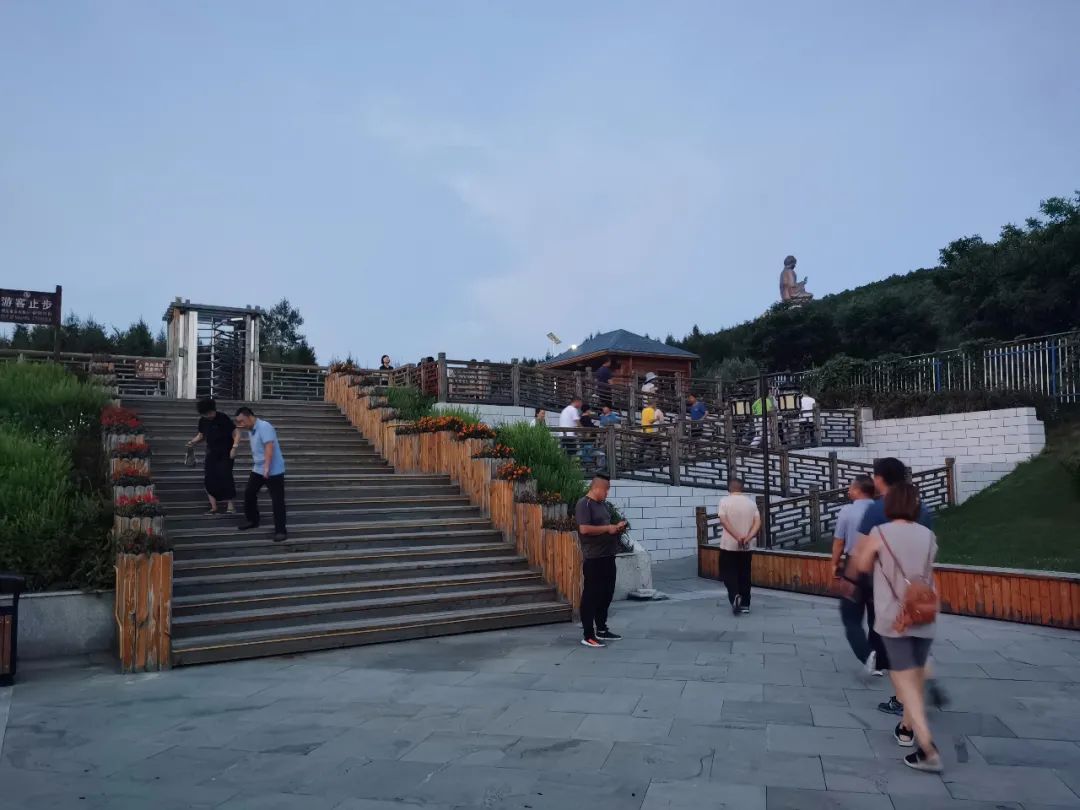
You can enter through the exit door of the scenic spot at night.
There is a large lotus pond at the exit of the scenic spot , called the Holy Lotus Pond . There is a place called Merit Forest , and Krishna didn't see anything special
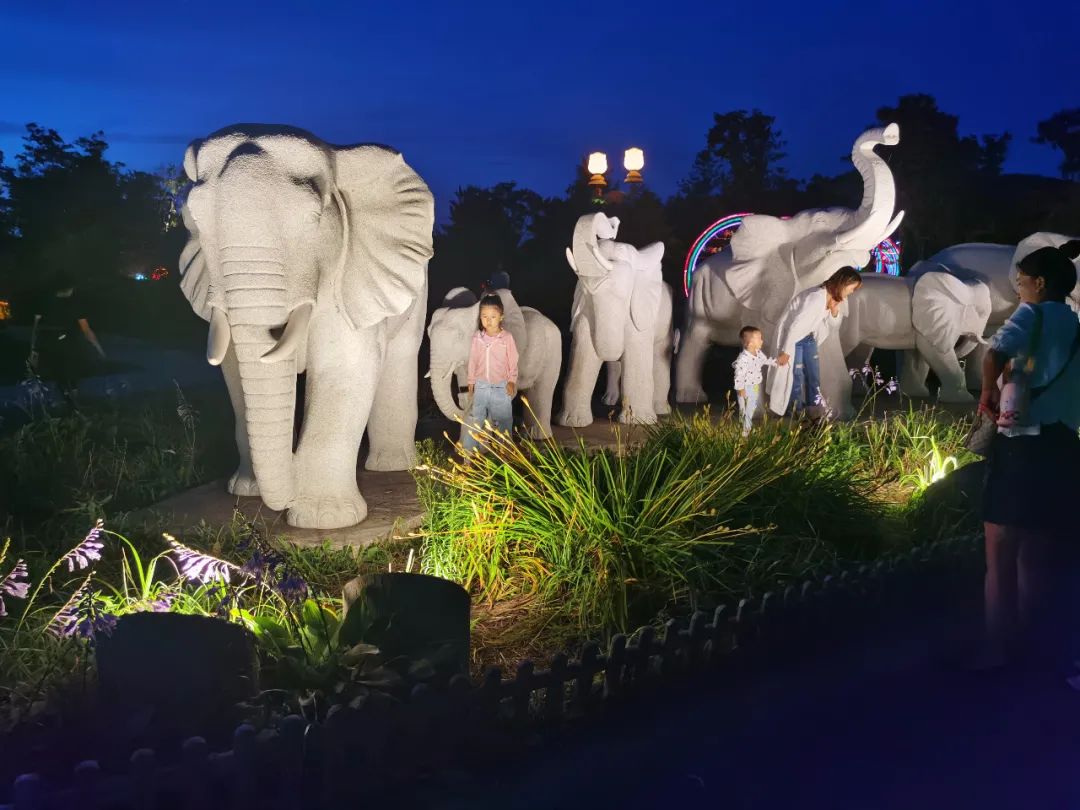
Auspicious elephants, white elephants are often used in Buddhist places. We feel that they are auspicious, but in the English environment, "white elephant" means "big and useless thing". The cultural differences are quite interesting.


Walking to the dam south of the Holy Lotus Pond, the night view of the pond is quite beautiful. Thanks to the night scene mode on Huawei phones. This dam is called Sanbao Bridge, and the pavilion in the middle should be called Zuilian Pavilion.
It was still bright when we came in, but it was already dark in an instant. We headed back home. Not far from the scenic spot, this sculpture at the intersection is a must-have.

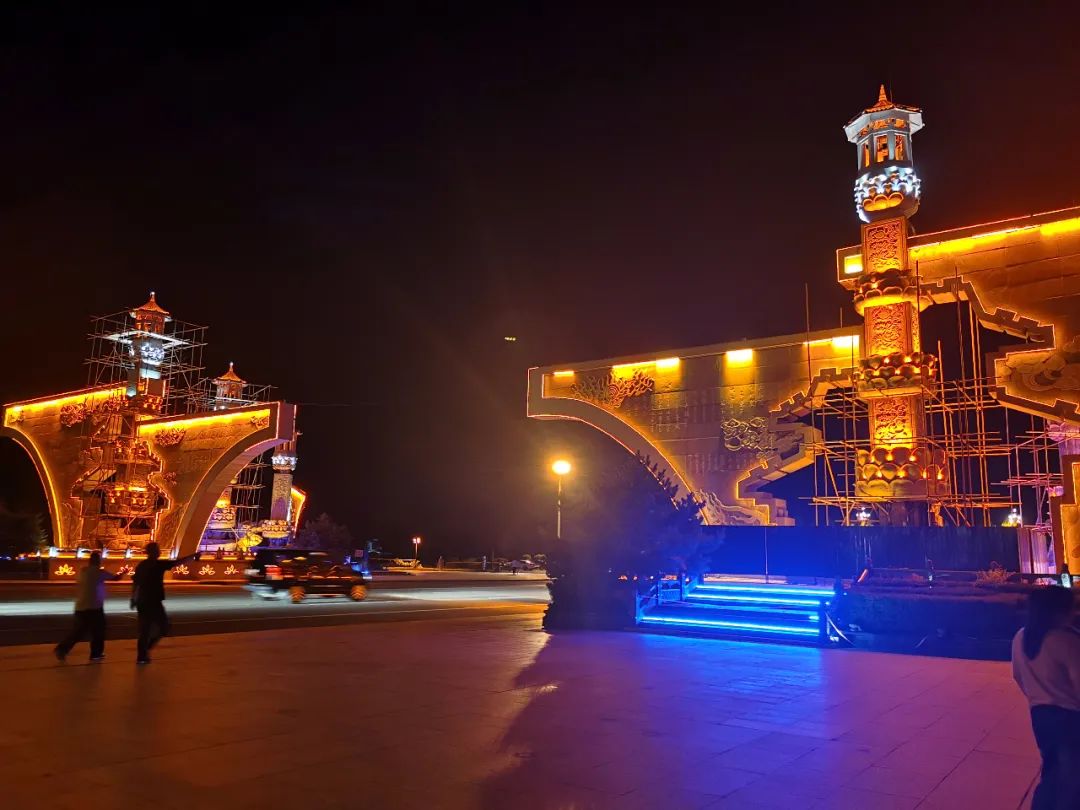

Unilateral appearance
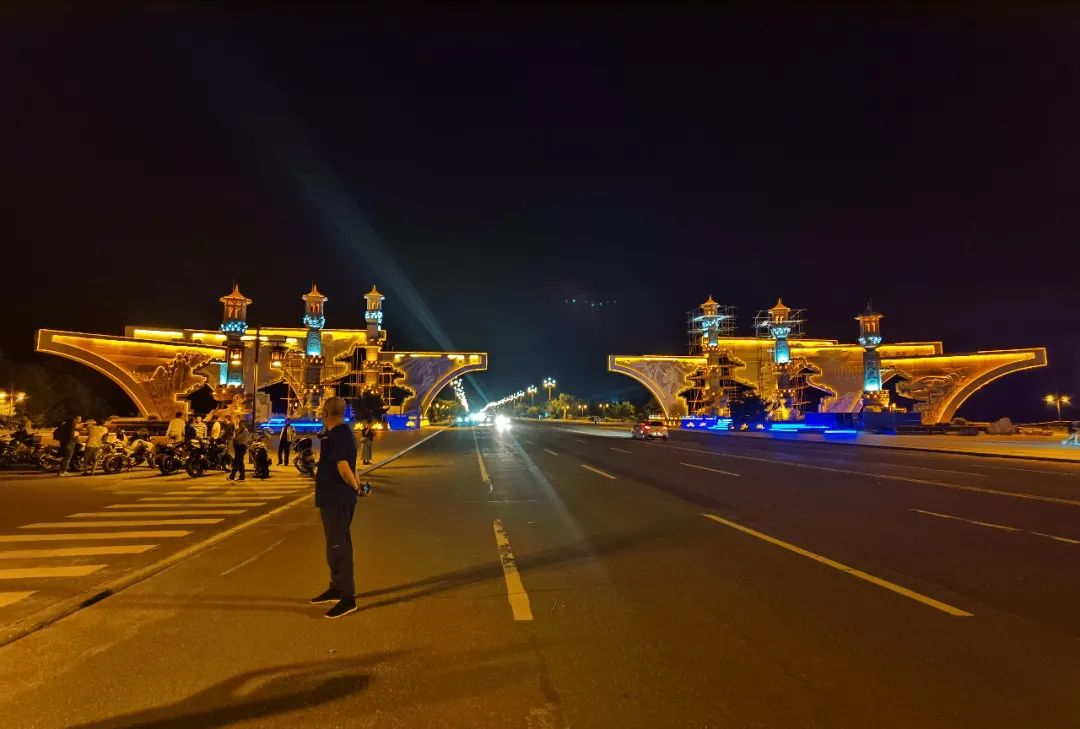
Panoramic view, on both sides of the road, I guess it means Liuding Mountain, there are six of them anyway. This place was originally called Liuding Mountain, but in comparison, the current name is more Zen-like.

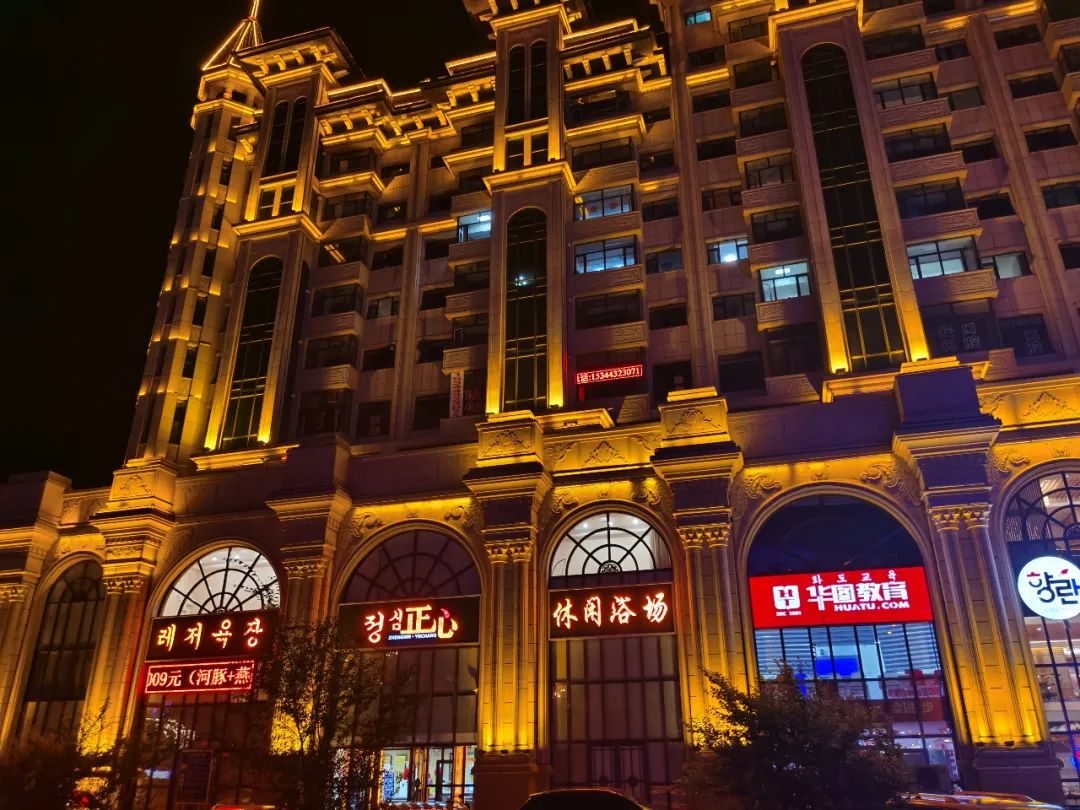
On the way back, I found that the night market economy in Dunhua is very developed, and the large market is crowded with people. This place should be the most prosperous place!
After a night of nothing else (drinking too much wine does not count), the next morning is the official trip to Liuding Mountain.
When I arrived at the scenic spot in the morning, I took a shortcut. I drove directly into the scenic spot or drove up the mountain along the back of yesterday's scenic spot. Because I had been there before and found that the driving road happened to be the road I used to go down the mountain. The whole trip was Do the opposite. In short, the parking place is just under the rosette of the big Buddha on the top of the mountain. We entered through the door that should normally be the exit of the rosette.
The lotus seat of the Buddha is actually a three-story small building with a hollow interior, which is the Buddhist Culture and Art Museum.



Entering the lobby on the first floor to take pictures, since it is a lotus seat, it must be a circular building.
Go directly to the third floor from the elevator and enter the art gallery.


From the small staircase, you can go up to one level, and there is also a Buddha statue inside.



Buddhist culture display.
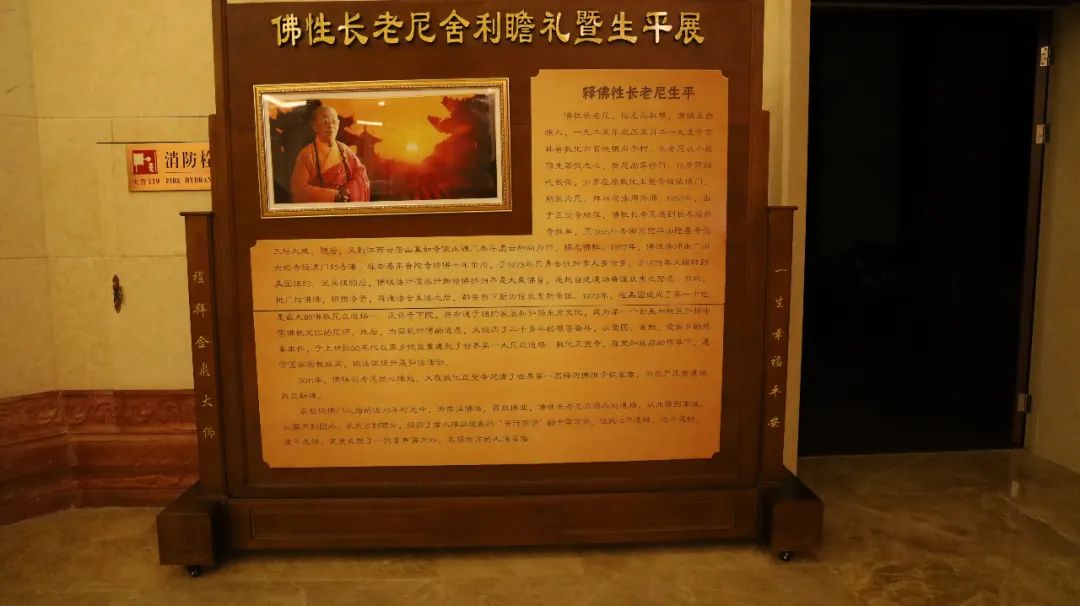
This old nun is the sponsor of the giant Buddha on the mountain. She has made countless merits for Buddhism, and in fact, it has also contributed to the development of the local economy.

Walking up the stairs to the second floor (we took the elevator to the third floor as soon as we entered), the real art gallery is on this floor.

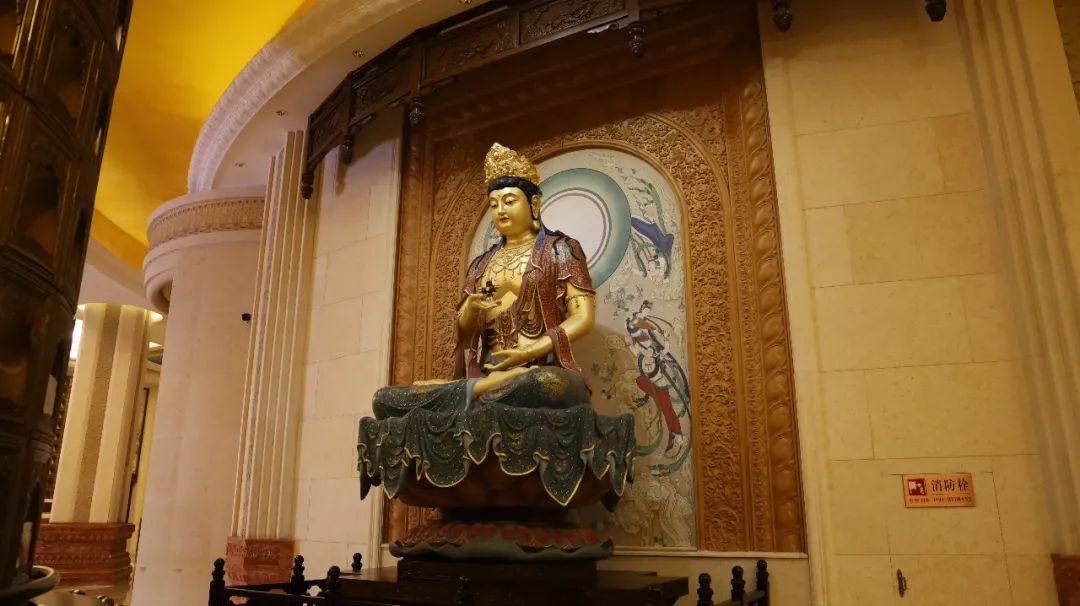
The Buddha statues are exquisite and new.



It seems that there are not only Buddha statues, but also gods and goddesses from all walks of life. Generally, temples in the Northeast offer a complex system of gods and goddesses. Buddhism and Taoism often cooperate with each other for a win-win situation, unlike in the South, where the two schools are distinct.
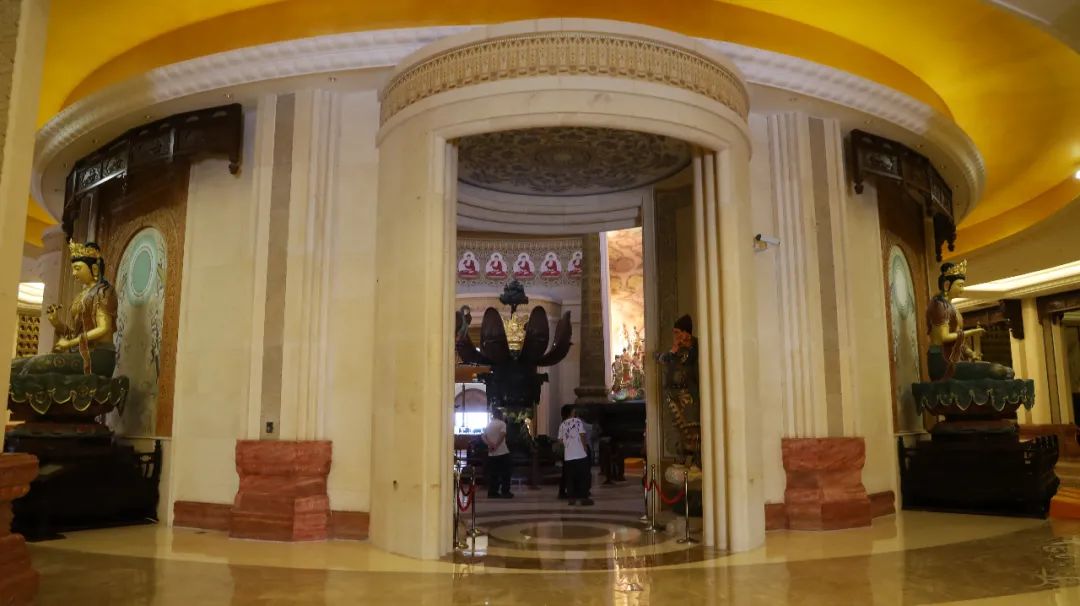
There is a big lotus in the middle

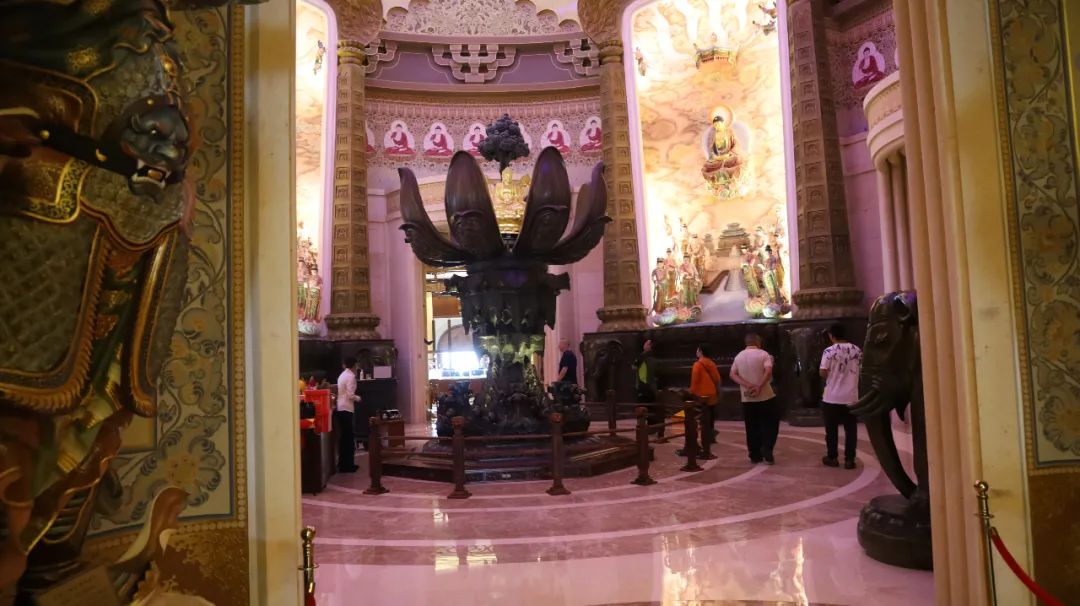

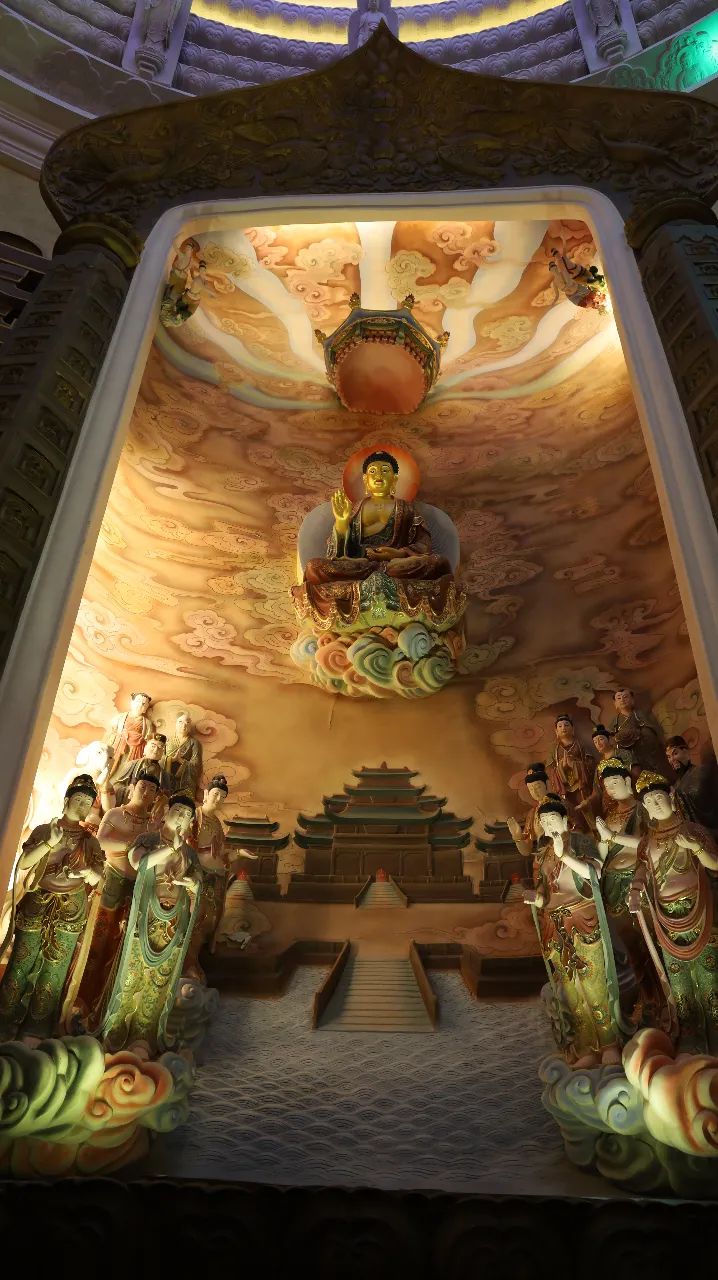



The surrounding Buddhist reliefs are three-dimensional and lifelike. I was deeply impressed when I came last time.

Lotus crown.
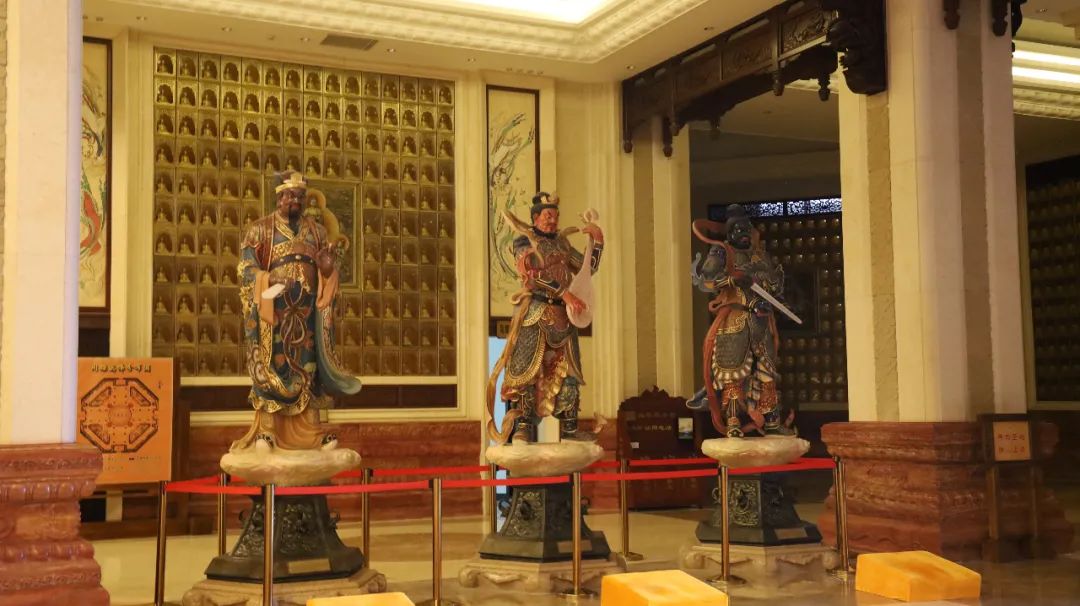
The two on the right should be two of the four heavenly kings, they can also be regarded as Buddhists! A little forced.
Coming out of the base art gallery, you are right in front of the Buddha statue, which is the highest point of the scenic spot. The temple where the giant Buddha is located is called Zhengjue Temple.
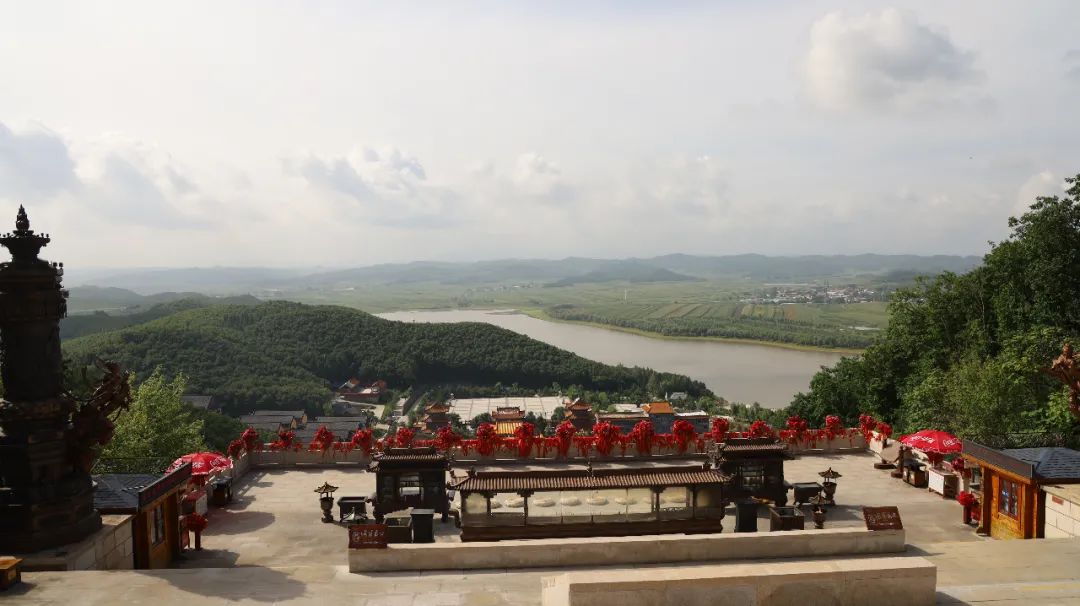

It doesn't look like much at all. The lake in the distance is called Shenglian Lake.

Looking back up, you will see the Big Buddha.
The Jinding Giant Buddha is located on the top of the back mountain of Zhengjue Temple in Liuding Mountain National Scenic Area, Dunhua City, Jilin Province. On September 23, 2011, it was consecrated by the President of the Chinese Buddhist Association, Elder Jinghui, the Vice President, the Great Monk Shenghui, etc. 108 A virtuous and eminent monk presided over the consecration.
The Jinding Giant Buddha is located at the top of the mountain behind Zhengjue Temple, facing south from the north, with the Mudan River at its back, Zhengjue Temple in front, and the Greater Hinggan Mountains in the distance. It is far away from the Tian Tan Giant Buddha in Hong Kong. It is actually one Buddha with two bodies, located in the north and south, and jointly protect the land of China. , enlightening wisdom and blessings to believers from all over the world.
The Buddha is 48 meters in length from the lotus seat. Among them, the Buddha is 38.4 meters tall, the lotus seat is 9.6 meters high, the lotus petals are 80, and the lotus diameter is 32 meters.

There are not many places where people are allowed to take pictures of the Buddha. It is probably outdoors and there is no way for justice to stop it. It is better to let everyone take pictures as much as they want.

The mountains next to it.

side
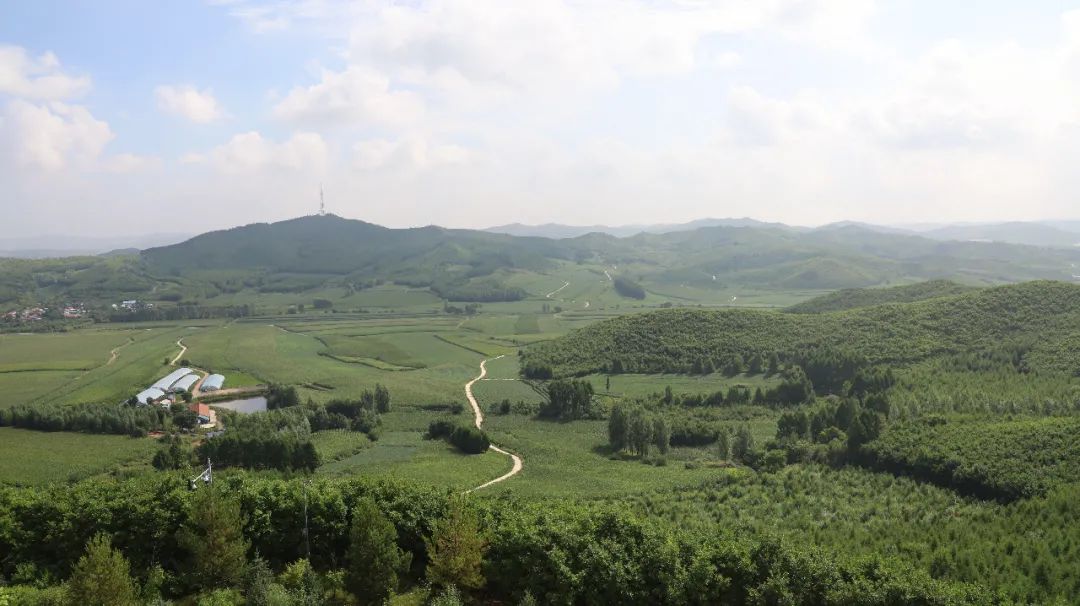

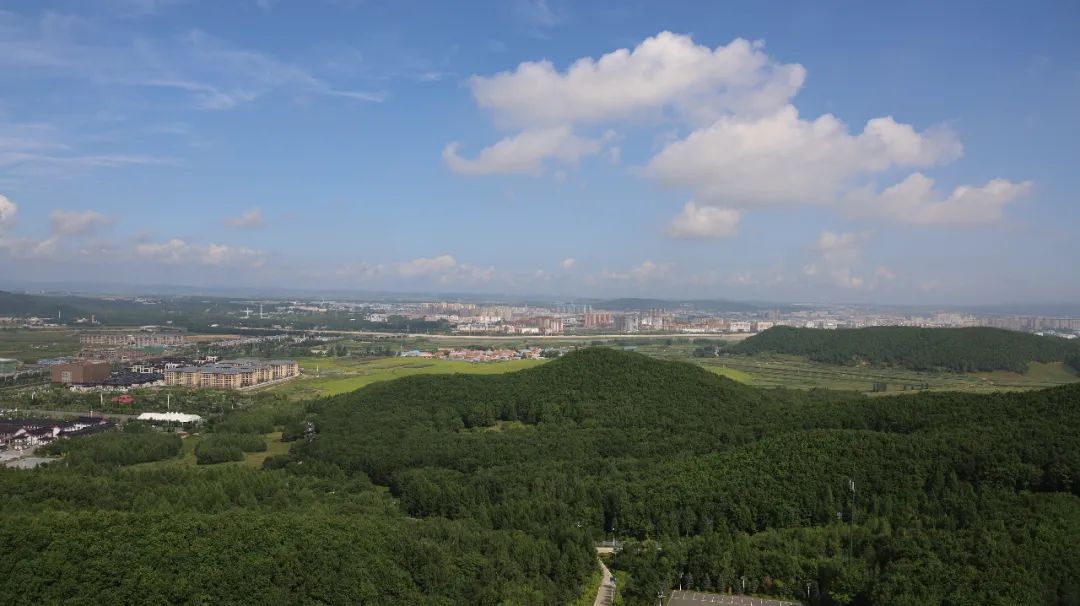
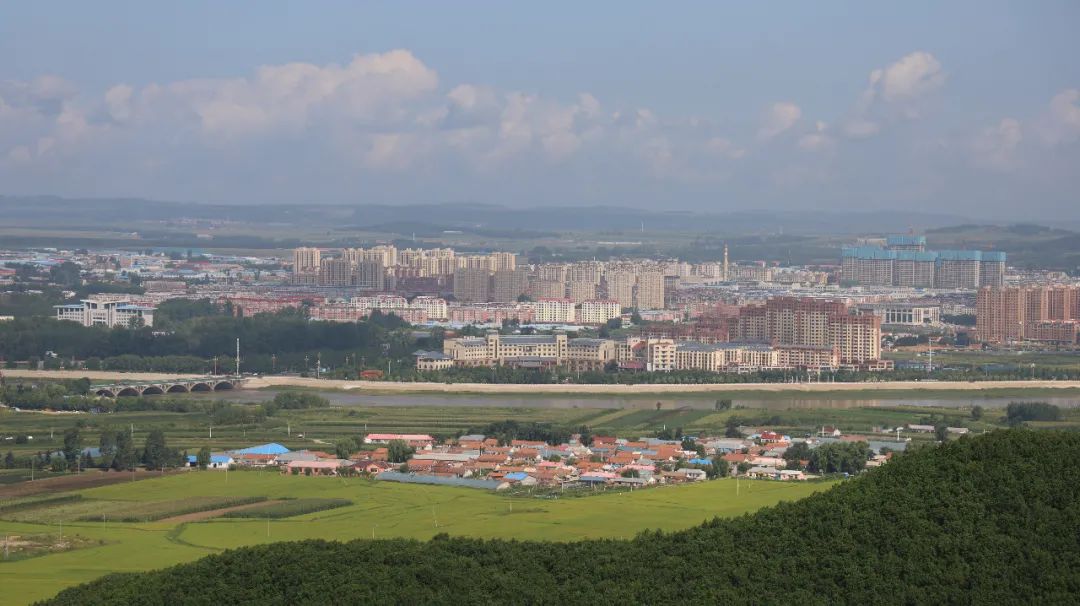
Dunhua city in the distance. The arc-shaped building in the middle is the hotel where we stayed.
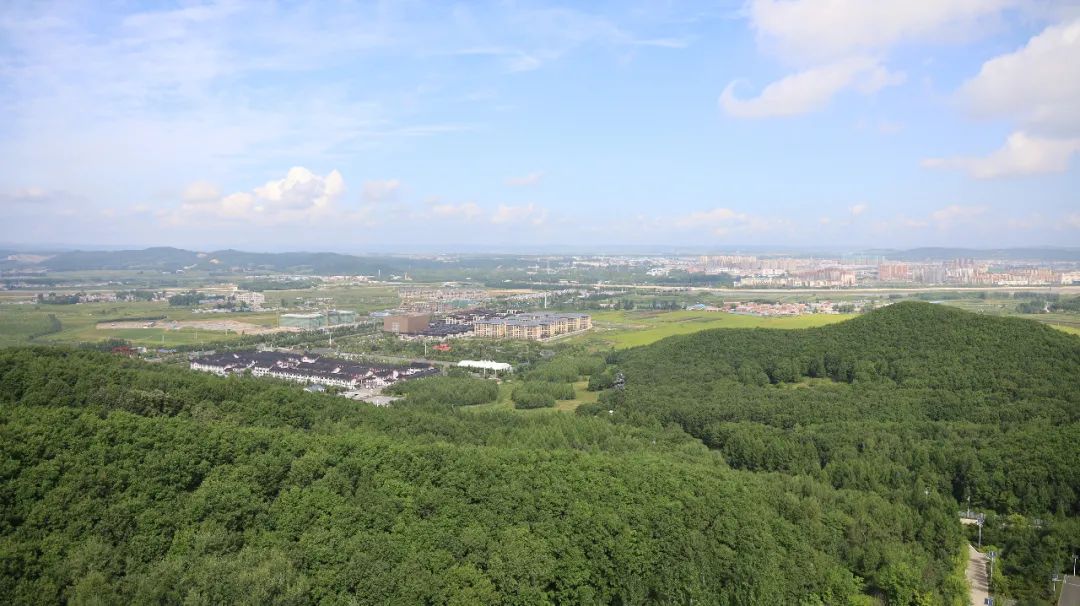

This angle is the official entrance to the scenic spot, and the dam is where we walked last night.

Another influence of the scenic spot is the Qing Ancestral Temple, which is said to be the ancestors of the Qing Dynasty. Because it is far away, it is impossible to go there. I don’t know which one is commemorated inside, because there is already a memorial to Nulehaci in Yongling in Qingyuan, Liaoning. The ancestors of several generations ago, and it has also applied for a world cultural heritage.

Turn to the front of the Buddha for a close-up. The expression of the Buddha is really well done.

This is the whole view of Zhengjue Temple. The last time I came here, I took the regular route and walked up from the foot of the mountain. I remember it was very tiring. This time, it should be much better from top to bottom. We decided to walk up.

The dirt on the chest of the Buddha statue is probably not easy to clean.
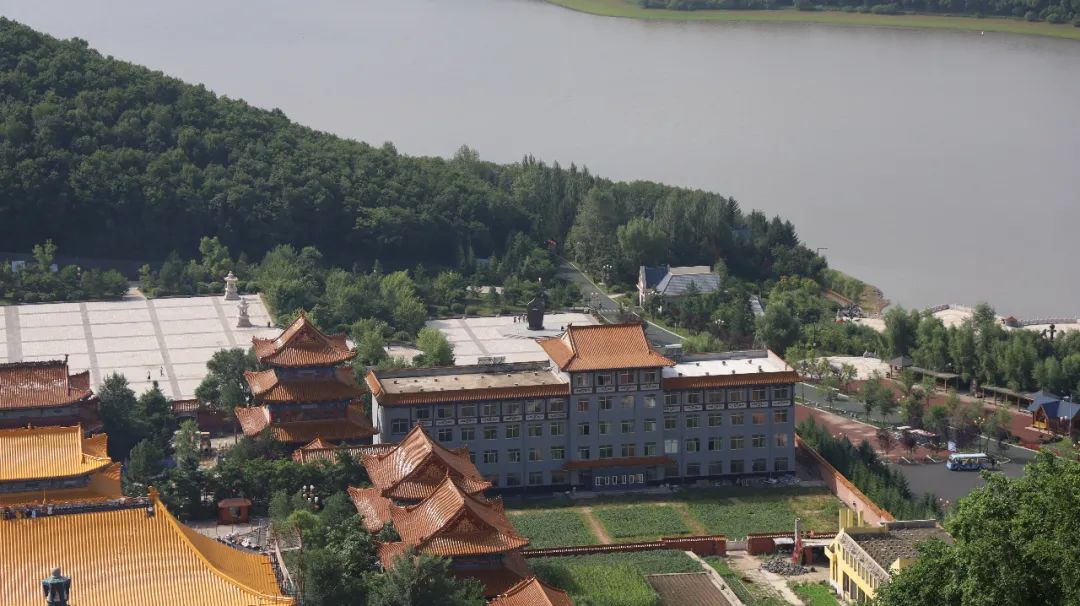
The entrance to the scenic spot is called Fayin Square.
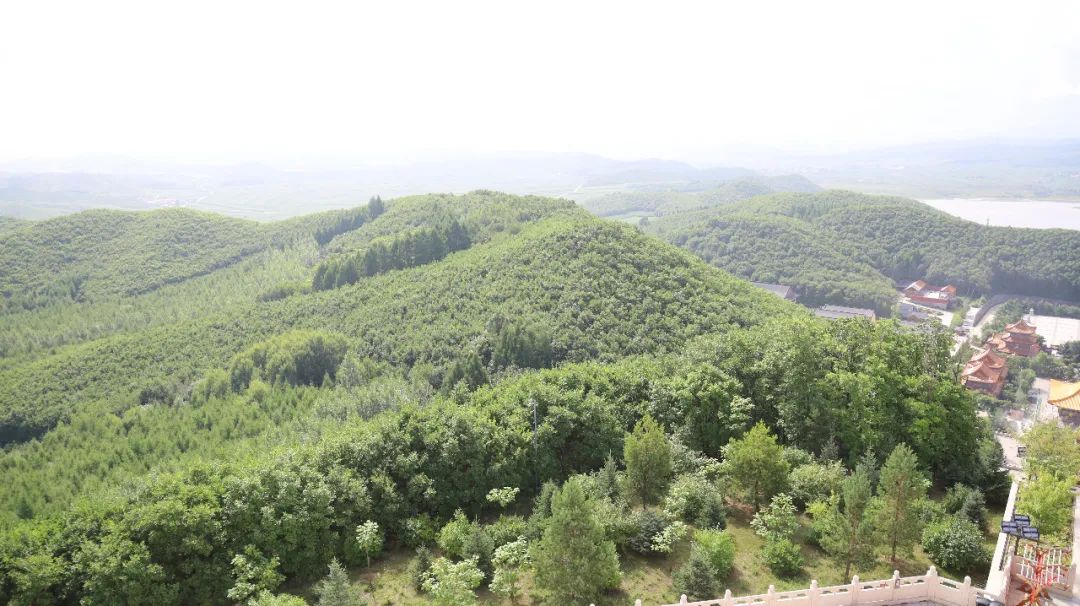

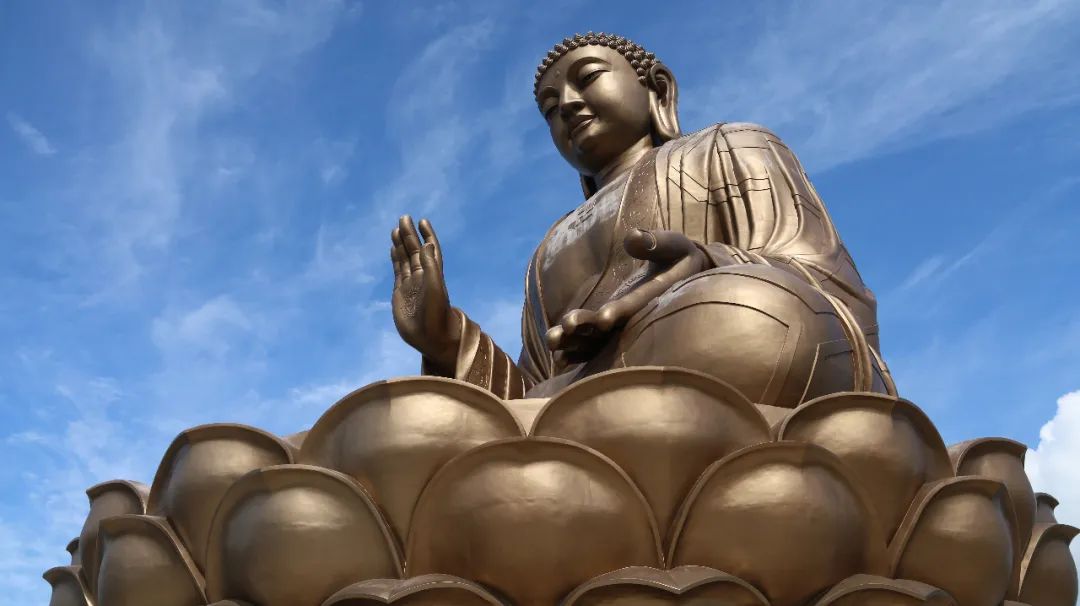
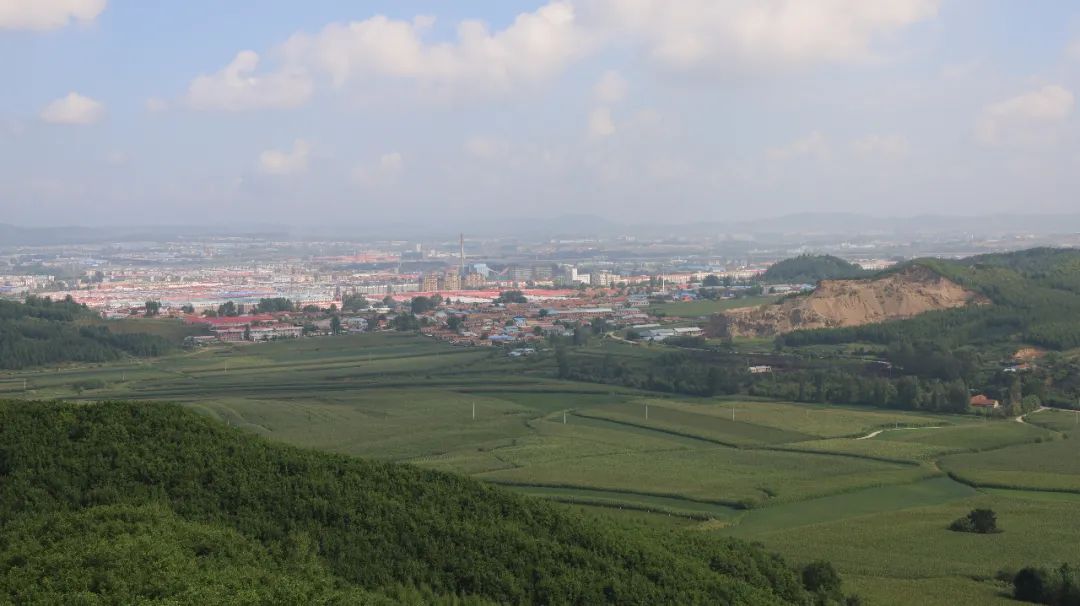
Start walking down. I took out the hiking poles I had prepared in advance because I had experience.

This is a long set of stairs, with a total of 19 floors and 480 steps. It goes around and around. It is really a test of one's physical strength to go up. Fortunately, we are going down.
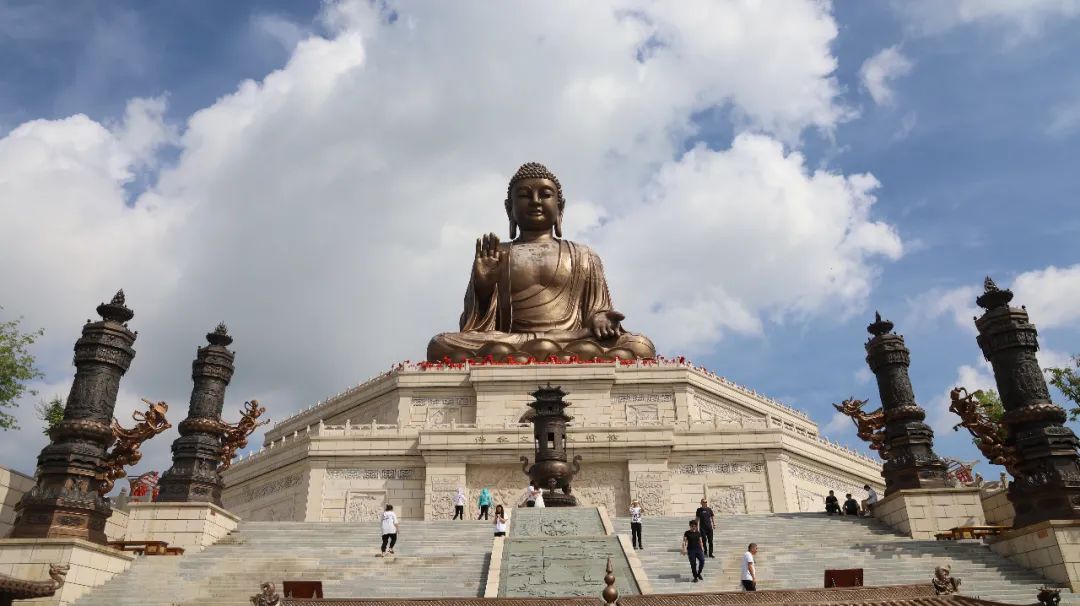
Walk to the Buddha Viewing Square, which is the perfect place to take pictures of Buddha statues.

It’s also perfect for taking pictures of the Zhengjue Temple below.
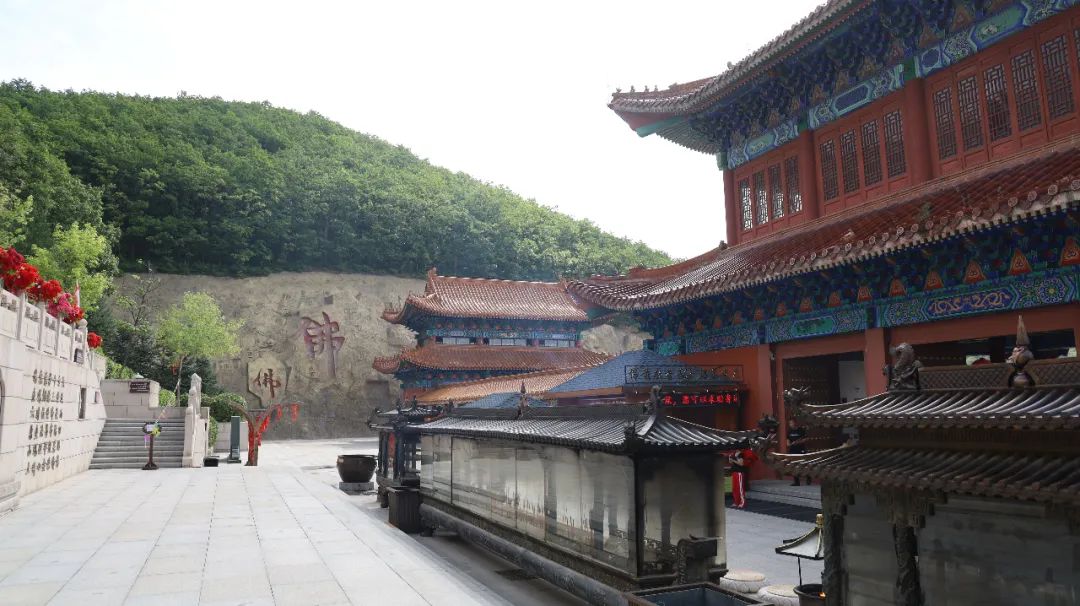
Walk down the 19th floor in one breath.
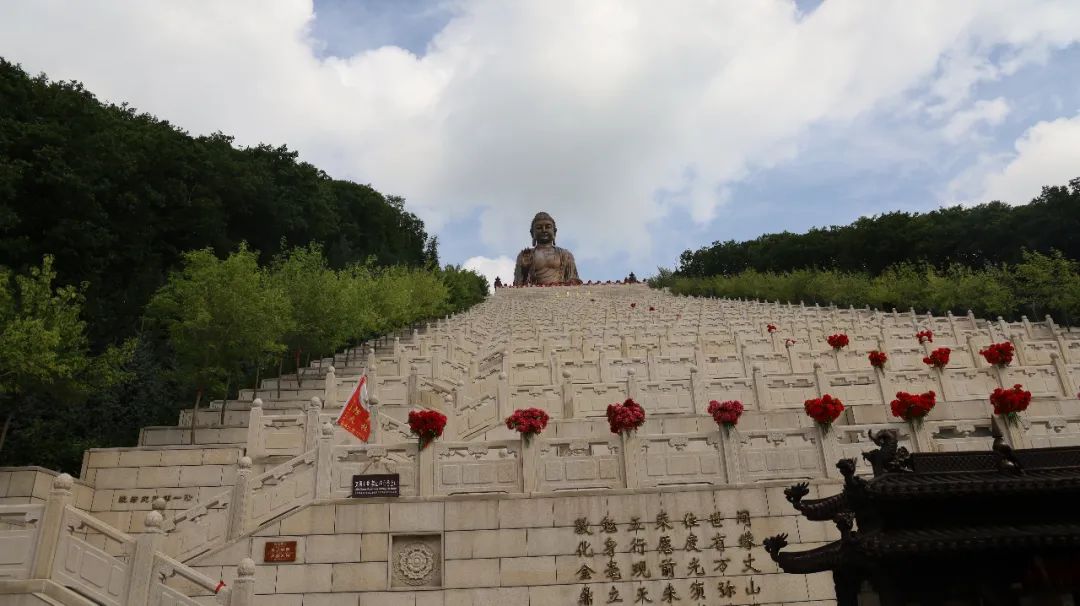
Looking back, it takes courage to go up.

On both sides of the rock arms
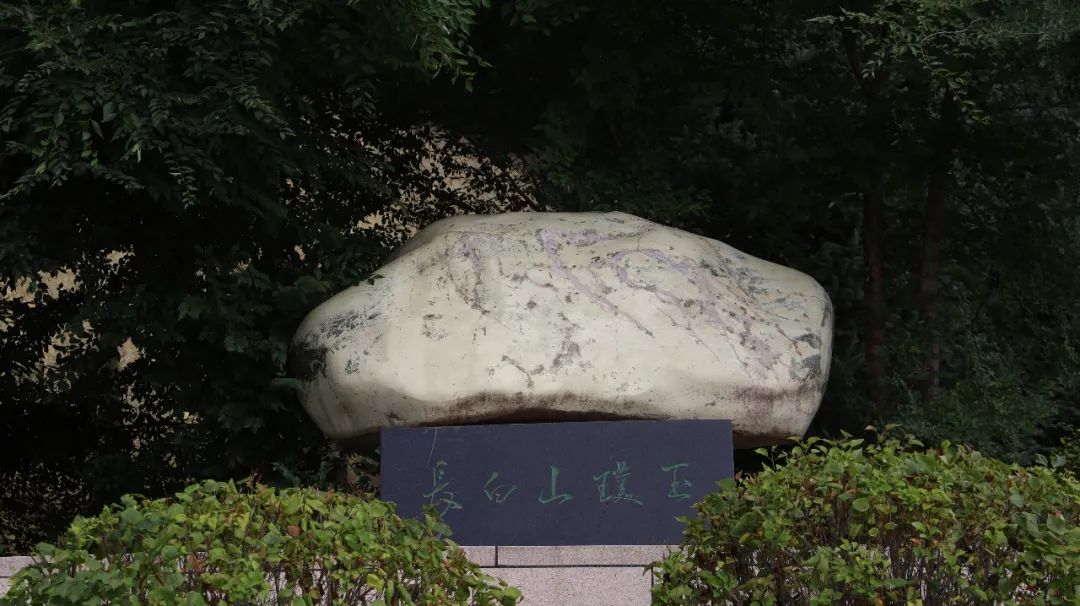
I think this piece of jade is just a piece of stone.

Does it feel much higher than when viewed from above?
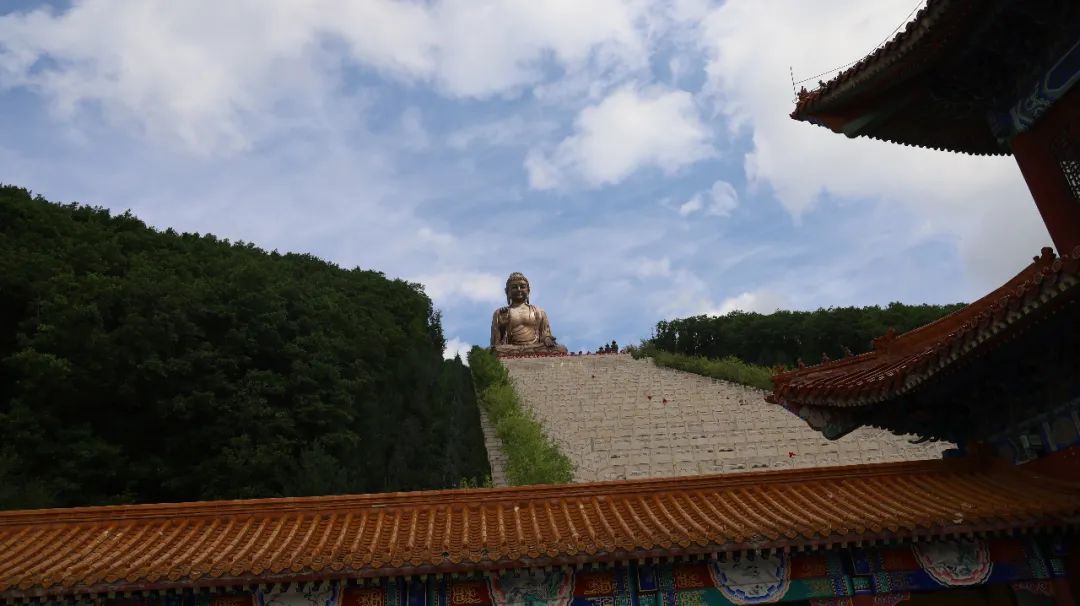
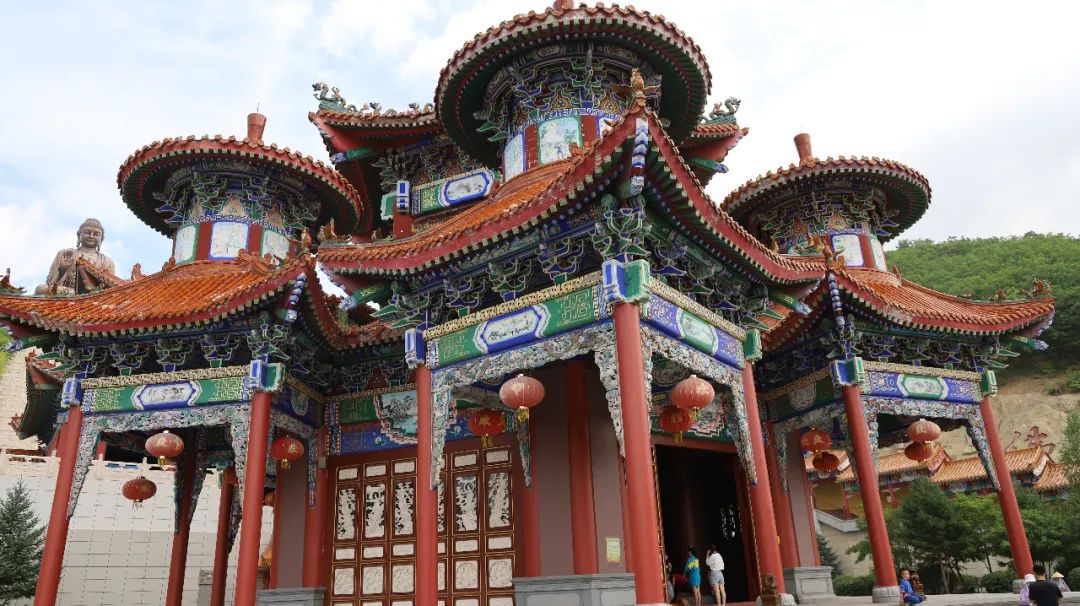
In the center of the square in front is the Thousand-Hand Guanyin.



You can see the Big Buddha from any angle. The Buddha is also always looking at you.
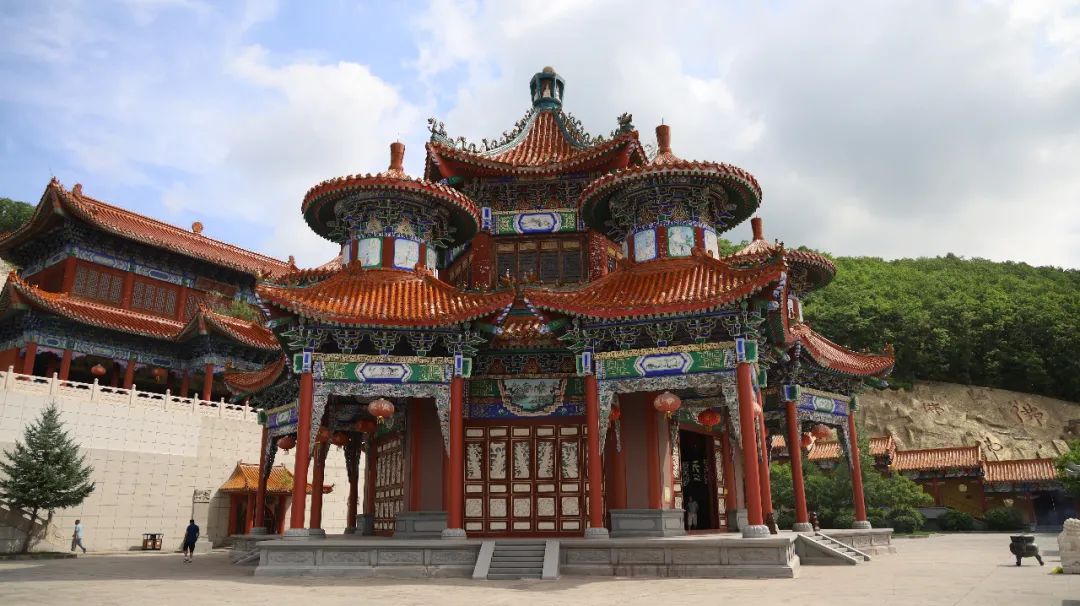


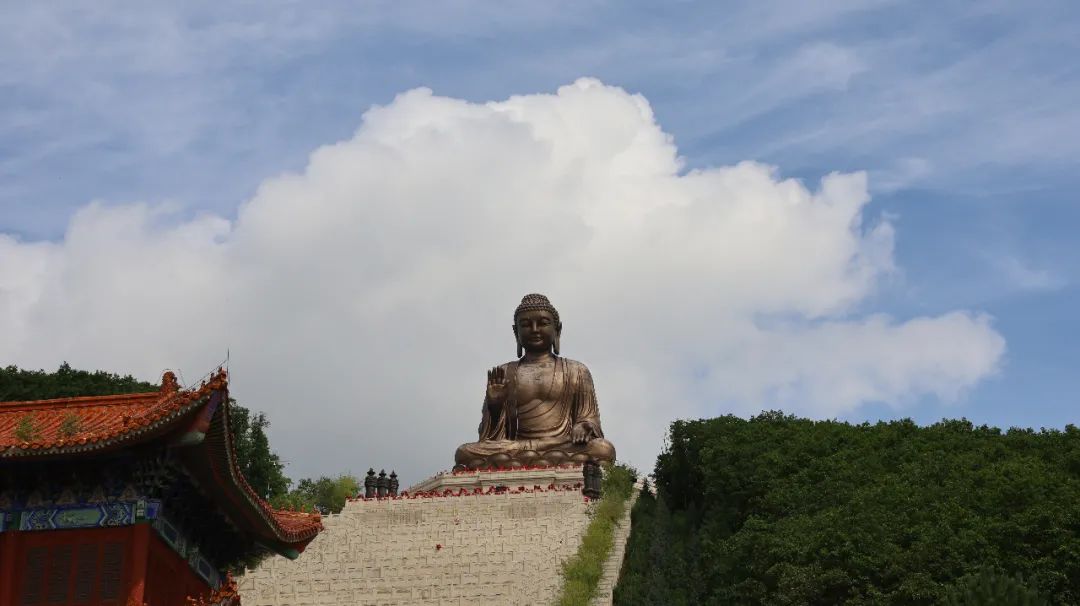

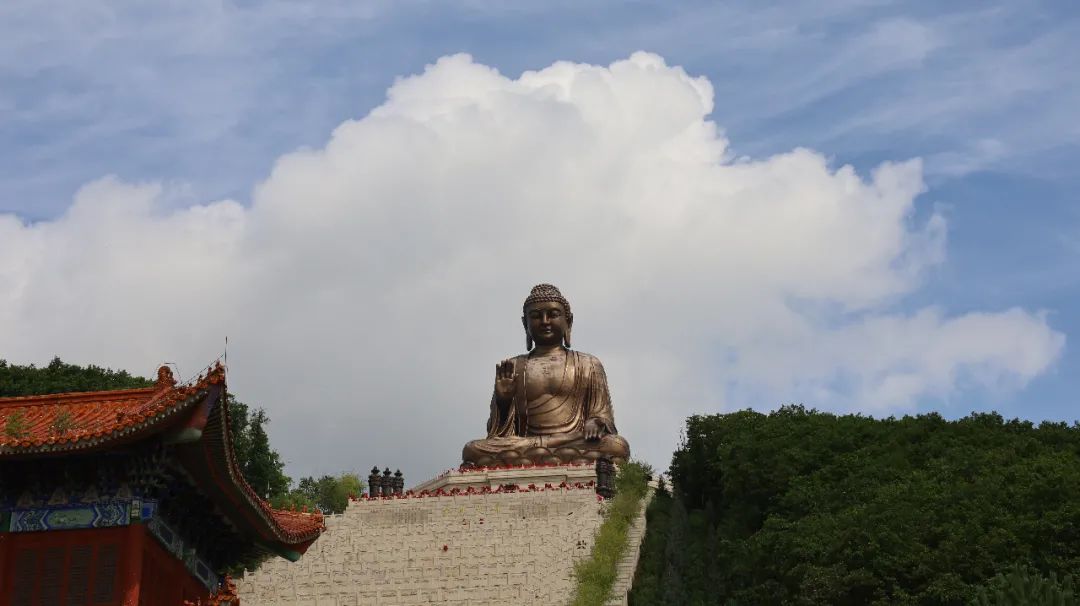
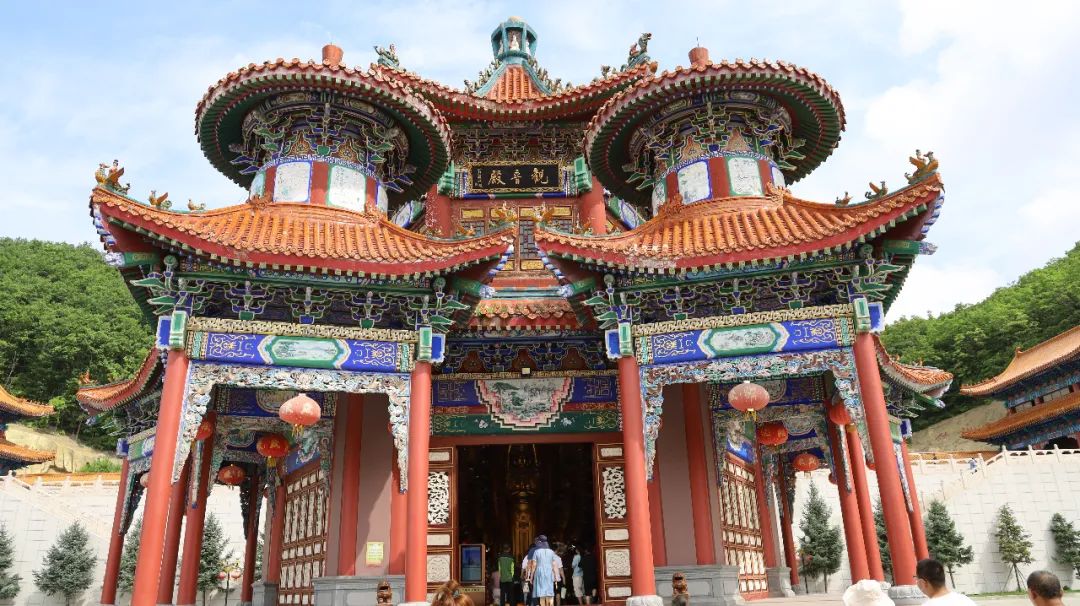

Thousand-Hand Guanyin.

Continuing downward, we reached the door. Unfortunately, the main hall was under construction.


I don’t know what this thing is called, but it keeps pace with the times and uses electronic products, which is safer, more economical and more convenient than lighting an oil lamp.


It is the square at the front, and the buildings on both sides are probably called the Bell and Drum Towers.


When I was going out, I saw a nun selling vegetarian food, which is some steamed buns and the like. The commercial atmosphere here is quite strong. By the way, this Zhengjue Temple is a nunnery, not a monk temple.
When you walk to Fayin Square in front, you will see another selling point.
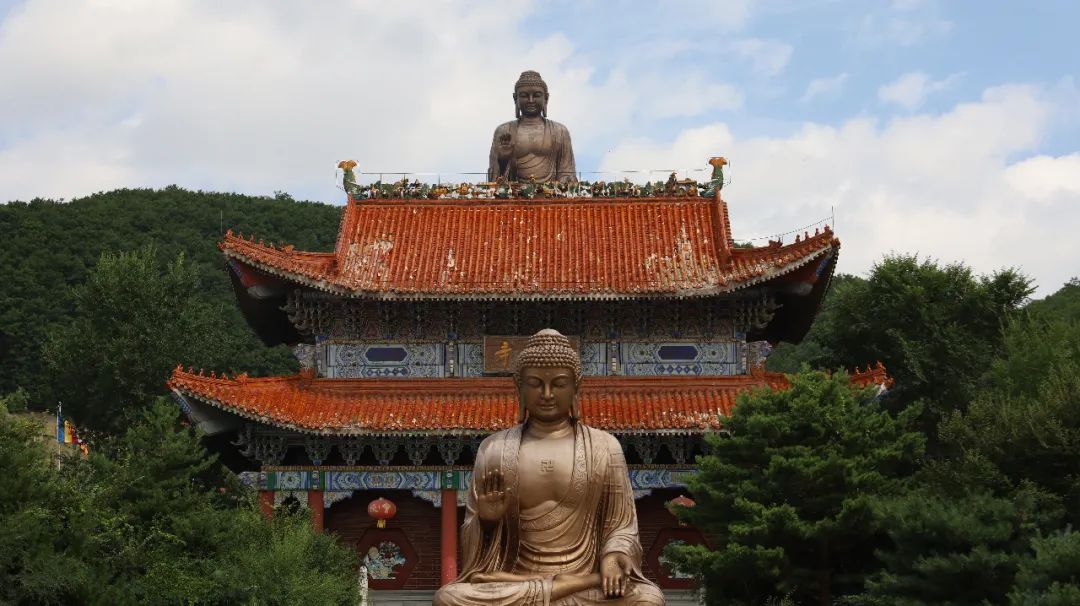


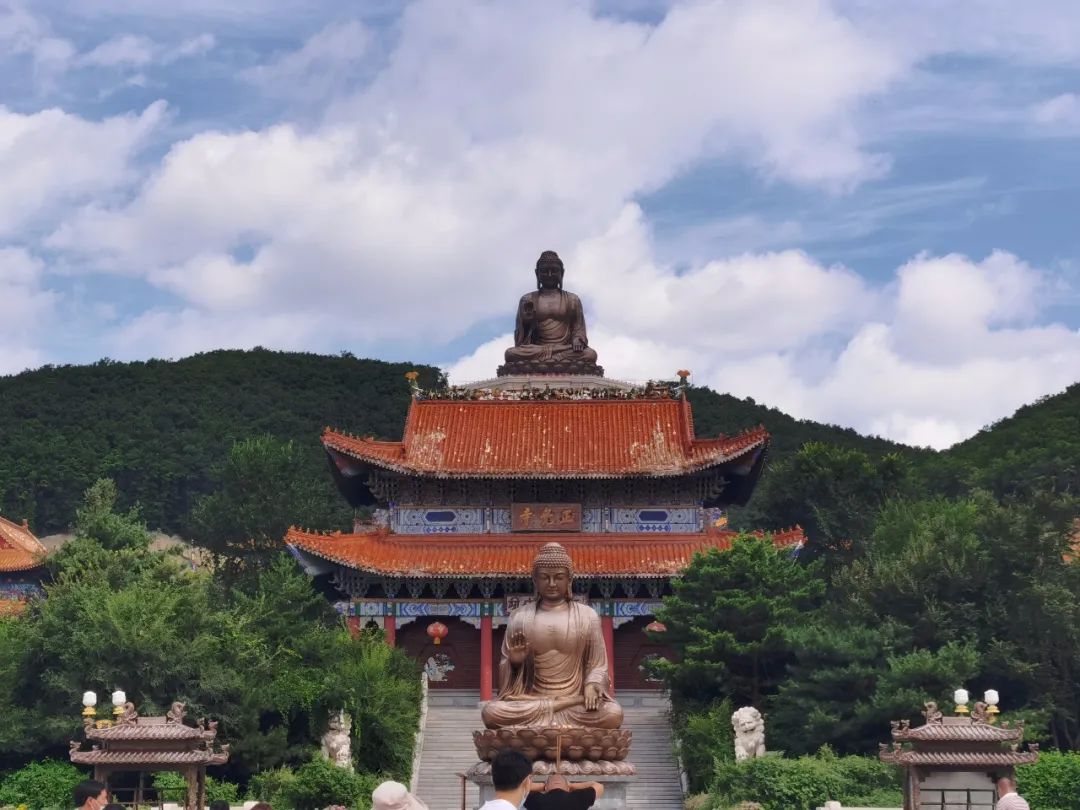

The Tonghui Small Buddha is a small model of the Jinding Buddha. It is a bronze Buddha statue cast according to one-tenth of the Jinding Buddha. The total height of the statue is 4.8 meters. The Tonghui Small Buddha is located in Fayin Square in front of Zhengjue Temple in Dunhua. The Buddha statue is solemn and kind, and it is the same as the Golden Cauldron Buddha.
I looked for several angles to get the effect of two Buddha statues. It seems that the Lingshan Buddha in Wuxi (the standing Buddha) has the same design.
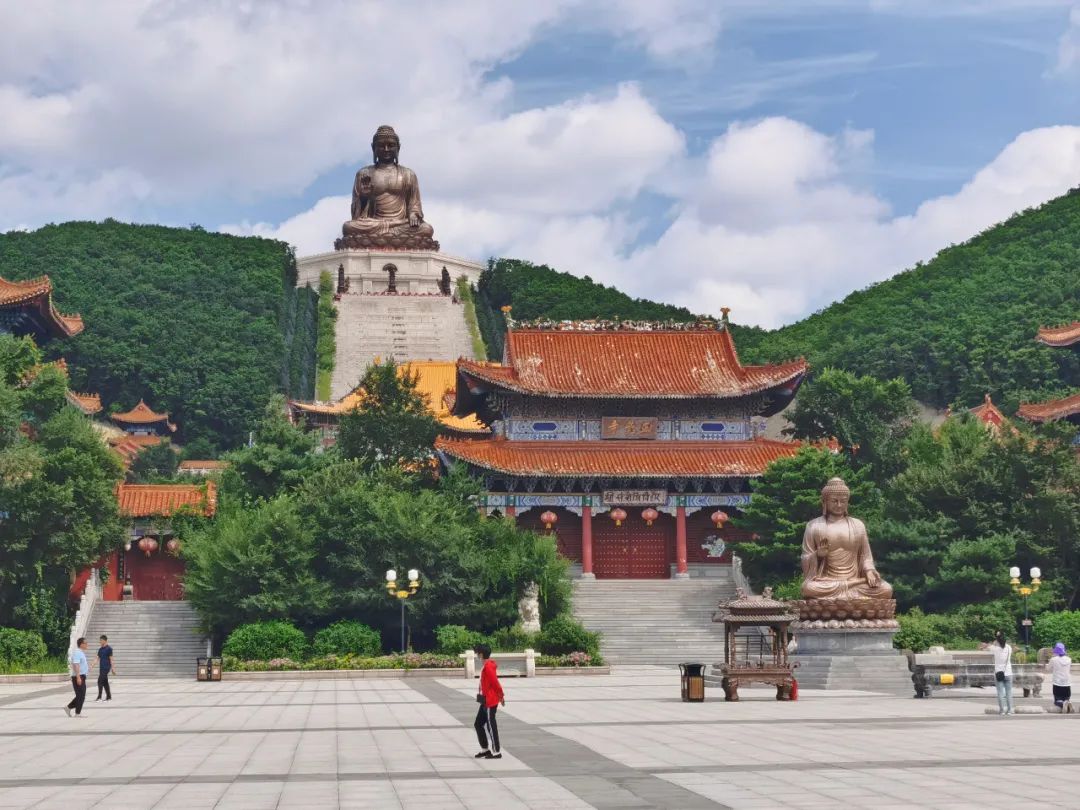
This can probably reflect the whole picture of Zhengjue Temple!

This thing must be called Zhuan Falun. The special thing is the gap at the top. When you find the right angle, you can fit the big Buddha on the mountain in.

Take a close-up.
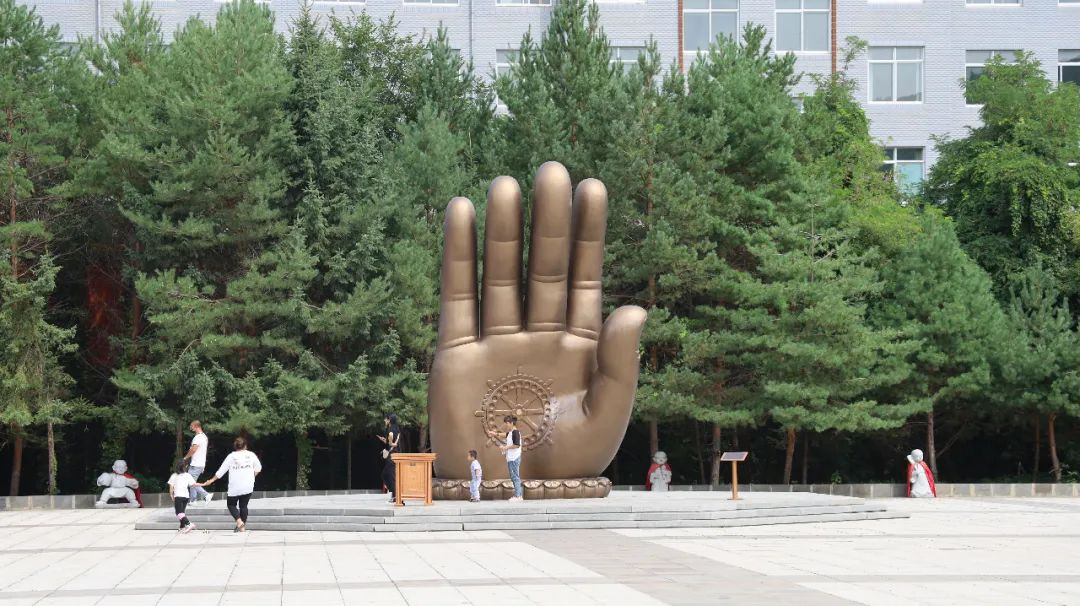
Buddha's hand, I feel that this hand should be the same as the Buddha's hand.
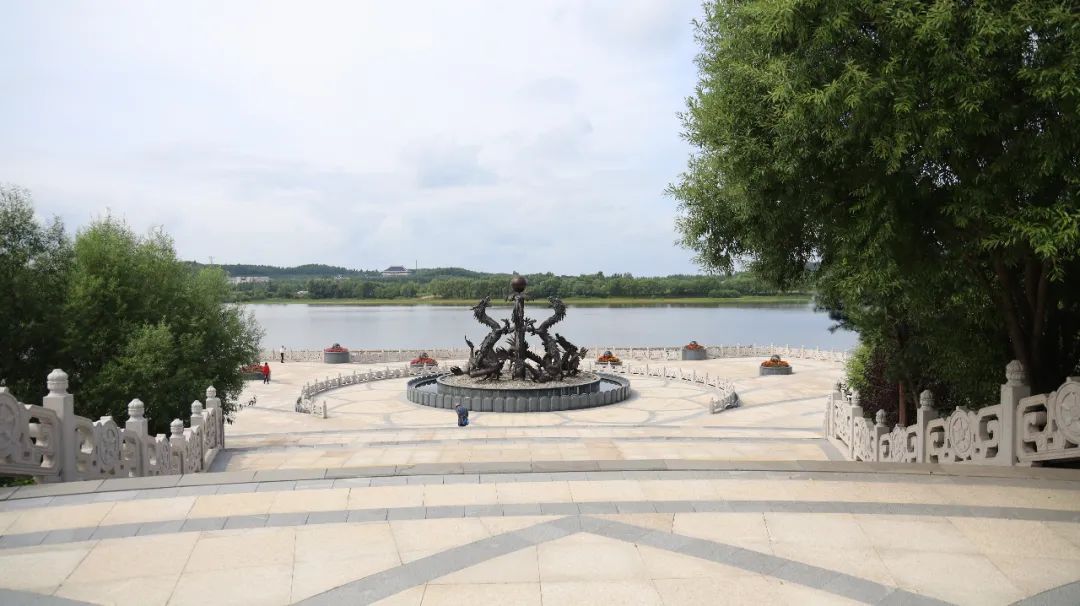

When I was walking back from here, I saw this thing by the lake.

Take another look at the Buddha.

I found someone preparing to perform next to me, and when I asked if it would take half an hour, I had to give up!
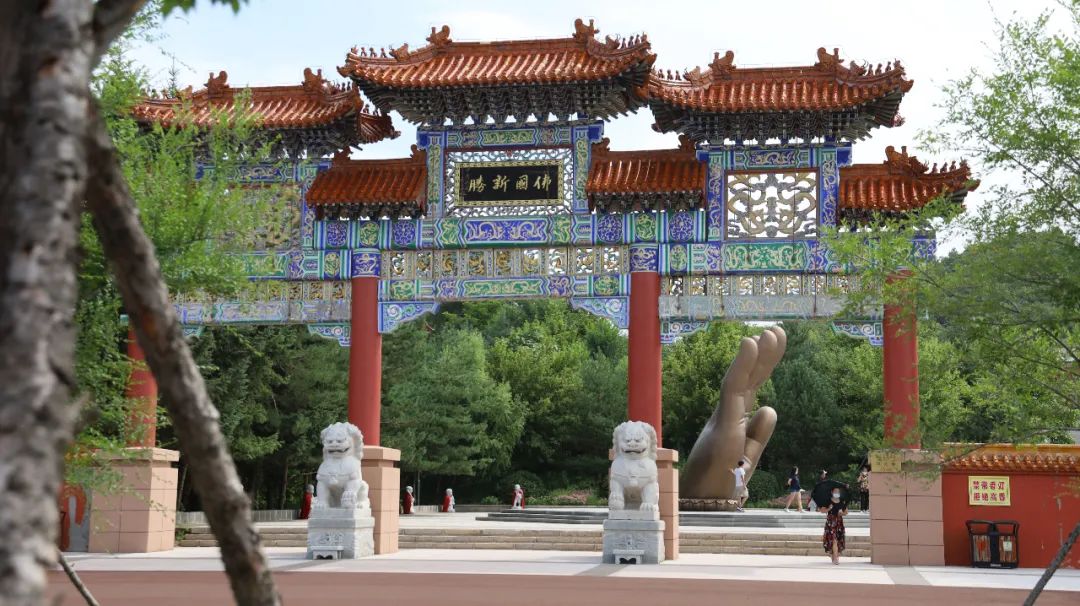
The entrance to the scenic spot on the normal route.

I should have bought a ticket and taken a sightseeing bus at the gate to get here.

All for nothing! Sakyamuni
